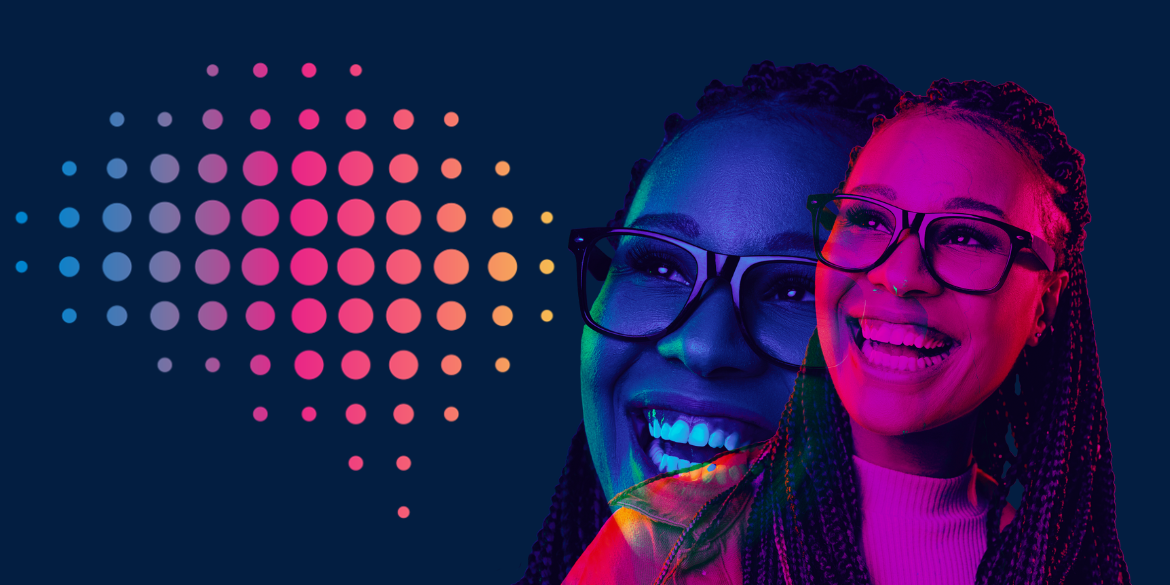The future is here. And it changes everything.
21 Mar 2024
5 mins

Unless you’ve been living under a rock for the last year, you’ll have seen extensive coverage of AI developments and the launch of various generative tools like ChatGPT, Gemini and Midjourney. Although generative AI (GenAI) and large language models (LLMs) have been around for some time, the sudden media frenzy around these tools has brought them firmly into the glare of public consciousness and corporate boardroom discussions everywhere.
As a result, companies are under pressure to demonstrate how they are utilizing AI to become more efficient and productive – not trailing in the wake of more adventurous and agile competitors. However, companies also need to move beyond the surrounding hype and toward concrete results. And they need to see them now.
Currently it’s the Wild West out there, with lots of businesses springing up and promising to radically transform productivity, and until the dust settles, it’s very hard for most companies to see where or how these substantial productivity gains will be made.
In our last blog, When everything changes…what does good look like?, we looked at how LLMs can help us get tantalizingly close to giving our clients in the localization industry exactly what they want – delivering high-quality translations, quickly and cheaply. We argued that despite the tremendous recent developments, for any solution to work in the real world right now, there has to be a blend of human intelligence with artificial intelligence to create Genuine Intelligence and get the best of both worlds.
This is something we have been doing at RWS for some time now.
We have one of the largest networks of linguists in the world, with over 35,000 in-house and freelance translators working for us – an enormous source of human intelligence to draw upon. And we’re no Johnny-come-lately to the AI world either. From our roots in scientific research at the University of Southern California way back in 2002, we now have over 20 years' experience of pioneering developments in artificial intelligence and 47 AI-related patents to prove it. We were the first company to launch statistical machine translation and also developed the world’s first neural machine translation platform – an unrivalled level of artificial intelligence knowledge and know-how in the localization industry. We know what we’re doing and have been delivering real-world results using AI for several decades.
Technology is already used extensively in the localization process – from managing projects and workflows, to using machine translation and translation memories – but it can’t do everything. Humans still have to be in the loop to ensure translation quality and make sure the translations are accurate. Although technology can’t do everything, we believe it can and will do more.
Our Evolve solution uniquely combines the capabilities of neural machine translation, large language models and human-in-the loop services, streamlined within a translation management system, to give customers a fully secure, end-to-end linguistic AI solution.
So what does that look like in detail?
The customer’s content is first submitted to our own translation management system, Trados Enterprise, so everything is kept within an end-to-end solution, which means everything can be tracked, monitored, and kept secure.
The automated workflow then processes the content through our neural machine translation platform, Language Weaver. No one has achieved perfect machine translation output yet, so the content is then analyzed by Machine Translation Quality Estimation (MTQE), also from Language Weaver, but specially trained by our own in-house language specialists. Unlike other Quality Estimation tools, our process leverages human intelligence to determine whether MT results are good, adequate but could be better, or poor, based on real-world post-editing scenarios.
The next step is new, and we believe will radically transform the efficiency of the translation process. The content that was assessed as being good is left alone and the content that’s adequate or poor goes through a fine-tuned LLM. The workflow repeats this process a maximum of three times if needed. With each iteration, more and more of the content is deemed good, and the amount that is deemed adequate or poor is reduced or eliminated. So, for example, instead of perhaps 30% of the content needing to be reviewed by our translators, by using this approach, the amount to review drops to say 10% – speeding up the process significantly and reducing costs.
By automating more of the post-editing step, we can minimize the amount of manual work needed and optimize our expert human translator workflows. As a result, Evolve delivers substantial efficiency gains – up to 65% – and radically transforms localization ROI.
What’s more, the suggested changes that are accepted as being better are then fed back into our neural machine translation, driving further improvements in the quality of our original output. Essentially, the more you use Evolve, the more it learns, and the better it gets. When adopted across an entire organization, Evolve accelerates and maximizes those efficiency gains, and therefore the strategic value of localization for global companies.
For localization professionals, this opens up exciting new opportunities. As we get closer and closer to giving customers what they want – high-quality translations, quickly and efficiently – the role of the localization professional becomes ever more critical to a company’s global growth ambitions.
None of this is hypothetical. It exists here and now. For those companies looking to realize the real-world benefits of AI and the efficiencies it can bring today, Evolve is a ready-made solution.
To see if Evolve is right for you, register your interest here.

